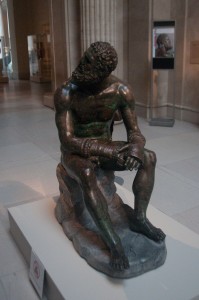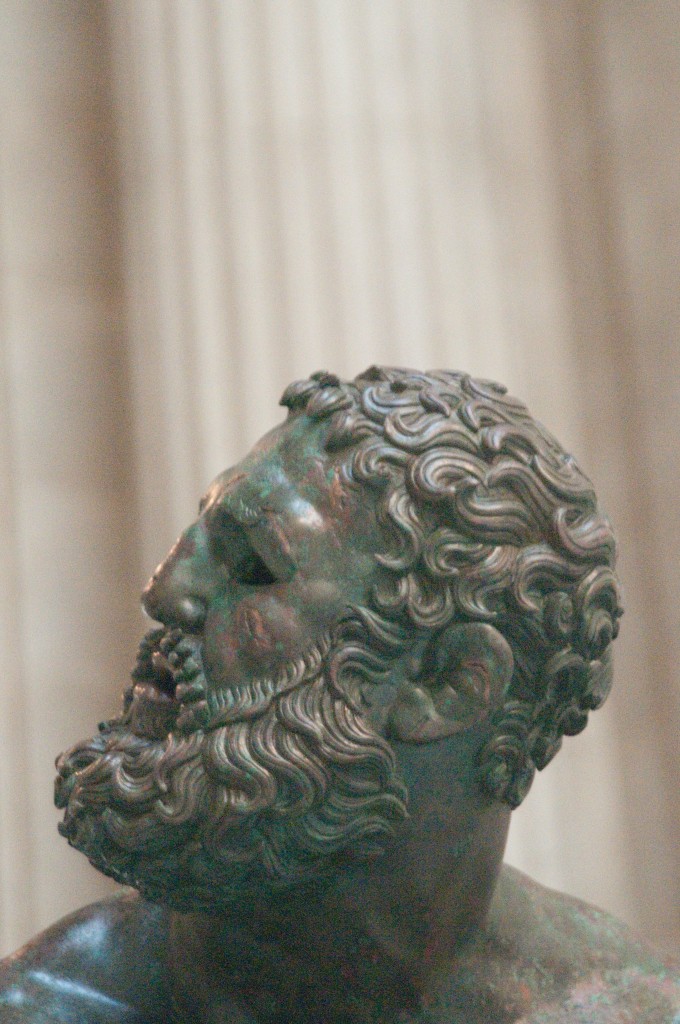Our custom on America’s Independence Day for several years has been to publish a photo of fireworks—the real thing from the annual display over the Hudson River here in little old New York (albeit one year delayed)—but this year we’re deviating from that practice, while still publishing a few images which we hope are far more gripping than fireworks.
On July 1 the Metropolitan Museum of Art went to a 7-day-a-week schedule (it had been closed Mondays for decades, originally in a cost-cutting move imposed in the 1970’s) and as part of those expanded hours was open today, July 4th. The only days of the year it now closes are New Year’s, Thanksgiing, and Christmas.
So we took the opportunity to see “Boxer at Rest,” a bronze statue on loan here only for six weeks. It’s a life-size statue from the Hellenistic period, late 4th—2nd century B.C.
From the Met:
The bronze statue Boxer at Rest was excavated in Rome in 1885 on the south slope of the Quirinal Hill near the ancient Baths of Constantine, where it is thought to have been displayed. The statue was intentionally buried in late antiquity, possibly to preserve it against the barbarian invasions that ravaged Rome in the fifth century A.D. The broad-shouldered, lanky pugilist is depicted just after a match sitting on a boulder to rest after the unnerving tension of the fight. Something catches his eye and makes him turn his head: perhaps the applause of the spectators or the entrance of his next opponent?
In his athletic nakedness, he wears only boxing gloves and a sort of athletic suspender (kynodèsme) that was both protective and an element of decorum. The many wounds to his head, the primary target in ancient Greek boxing matches, make clear that he has just completed a match. Blood, represented by inlaid copper, drips from cuts on his forehead, cheeks, and cauliflower ears. His right eye is swollen and bruised. His nose is broken, and he breathes through his mouth, probably because his nostrils are blocked by blood. His inwardly drawn lips are scarred, likely indicating that his teeth have been pushed in or knocked out. Despite his exhaustion, the muscles in his arms and legs are still tense, as if the battered champion were ready to spring up and face a new combatant.
Powerful, disturbing, and shockingly unforgettable, nearly 2,400 years after its creation.




